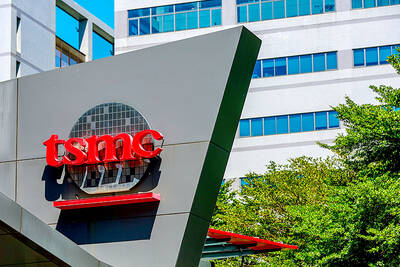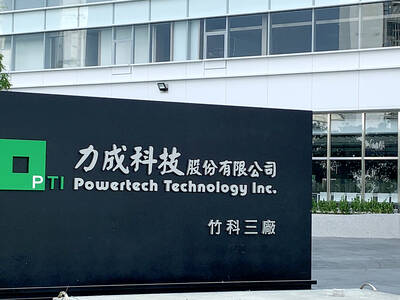In the chaos that ensues after a natural disaster, getting vehicles to aid workers for transporting refugees can be impossible, as roads are frequently blocked off.
An alternative is to airlift them in sections and construct them on the ground, says Yuki Liu, chief executive officer of car designer OSVehicle.
The idea is unworkable in the case of a standard car or four-wheel-drive, but possibly not for the Tabby Evo, an electric vehicle that can be shipped in parts and put together in an hour.
The Tabby Evo is the latest version of a “platform” car, which provides the bare bones of an electric vehicle — including the frame, suspension and steering systems, brakes, seats and wheels — on which companies, relief agencies and universities, among others, can build and tweak their own vehicle by adding doors, interiors and a shell.
The skeleton cars were created by Yuki’s brother, Tin Hang Liu, and OSVehicle wants them to be an easier route into the automotive industry. This would take away the necessity for years of research and development and hundreds of millions of dollars in investment.
Along with vehicles for aid agencies, the company is working on projects where fleets are used for car-sharing or as delivery vehicles for packages.
“We started to think about how to change automotives, because it is the most complex industrial product that has not changed for [some] time. Our background in automotives made us understand that there was a lot of need for innovation there, because everything was still made in the same way,” Yuki said.
Tin and Yuki, who are from Italy, followed their father into the motor industry. They soon became interested in the idea of circular economies, where resources are kept in use for as long as possible.
In 2008, Tin was working in Silicon Valley when he came in contact with open-source hardware — designs for machines and devices that have been publicly released. He applied the principles to cars, where one vehicle would be able to achieve a number of functions.
The Tabby Evo is the second version of the skeleton car. Available with two or four seats, the bare vehicle is charged using a wall plug and has a range of 120km, depending on the type of body attached to it, Yuki said. The maximum speed is 130kph, but this can be capped at a lower number depending again on what it is being used for.
When a company buys fleets of the vehicles — the minimum is 200 — they design the final vehicle and then buy and fit the seats, doors and other components separately. Batches of more than 500 four-seater vehicles cost just under US$5,000 each, although this price increases if the number ordered is less, chief financial officer Alberto Loddo said.
“To make a new car model from scratch, you would need five to seven years and US$100 million to US$200 million. With our platform, we want to shorten that to one-and-a-half to three years depending on the complexity of the vehicle and to US$3 million to US$20 million,” Loddo said.
An alternative is to download the designs for free from the OSVehicle Web site, in line with the open-source principle on which the company was founded.
The OSVehicle units consist of parts that can be easily swapped without throwing out other working parts, therefore expanding the vehicle’s lifespan, Yuki said.
Its core unit contains the most complex parts of a vehicle that means it is stable and ready to use, she said.
Loddo compared it to the Android operating system on mobile phones, where developers can use the software as a base on which to build apps.
“The automotive world and the tech world are merging, but the only thing is that the automotive world is very slow and big and not so fast to adapt to change,” he said.
The company makes money by selling the vehicles and also by designing and engineering final products for firms that want to make new vehicles using the “platform.” So far, 10 projects have been worked on, ranging from fleets of hundreds to those with thousands of cars, although the exact details are under wraps.
A two-seater car by an Italian IT company using its own information and entertainment system is to be launched in June.

Taiwan Semiconductor Manufacturing Co (TSMC, 台積電) has secured three construction permits for its plan to build a state-of-the-art A14 wafer fab in Taichung, and is likely to start construction soon, the Central Taiwan Science Park Bureau said yesterday. Speaking with CNA, Wang Chun-chieh (王俊傑), deputy director general of the science park bureau, said the world’s largest contract chipmaker has received three construction permits — one to build a fab to roll out sophisticated chips, another to build a central utility plant to provide water and electricity for the facility and the other to build three office buildings. With the three permits, TSMC

RUN IT BACK: A succesful first project working with hyperscalers to design chips encouraged MediaTek to start a second project, aiming to hit stride in 2028 MediaTek Inc (聯發科), the world’s biggest smartphone chip supplier, yesterday said it is engaging a second hyperscaler to help design artificial intelligence (AI) accelerators used in data centers following a similar project expected to generate revenue streams soon. The first AI accelerator project is to bring in US$1 billion revenue next year and several billion US dollars more in 2027, MediaTek chief executive officer Rick Tsai (蔡力行) told a virtual investor conference yesterday. The second AI accelerator project is expected to contribute to revenue beginning in 2028, Tsai said. MediaTek yesterday raised its revenue forecast for the global AI accelerator used

The DBS Foundation yesterday announced the launch of two flagship programs, “Silver Motion” and “Happier Caregiver, Healthier Seniors,” in partnership with CCILU Ltd, Hondao Senior Citizens’ Welfare Foundation and the Garden of Hope Foundation to help Taiwan face the challenges of a rapidly aging population. The foundation said it would invest S$4.91 million (US$3.8 million) over three years to foster inclusion and resilience in an aging society. “Aging may bring challenges, but it also brings opportunities. With many Asian markets rapidly becoming super-aged, the DBS Foundation is working with a regional ecosystem of like-minded partners across the private, public and people sectors

BREAKTHROUGH TECH: Powertech expects its fan-out PLP system to become mainstream, saying it can offer three-times greater production throughput Chip packaging service provider Powertech Technology Inc (力成科技) plans to more than double its capital expenditures next year to more than NT$40 billion (US$1.31 billion) as demand for its new panel-level packaging (PLP) technology, primarily used in chips for artificial intelligence (AI) applications, has greatly exceeded what it can supply. A significant portion of the budget, about US$1 billion, would be earmarked for fan-out PLP technology, Powertech told investors yesterday. Its heavy investment in fan-out PLP technology over the past 10 years is expected to bear fruit in 2027 after the technology enters volume production, it said, adding that the tech would